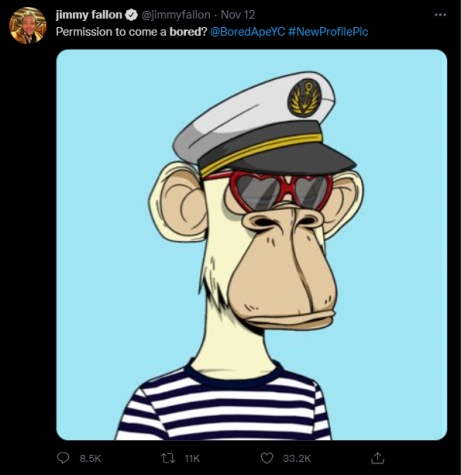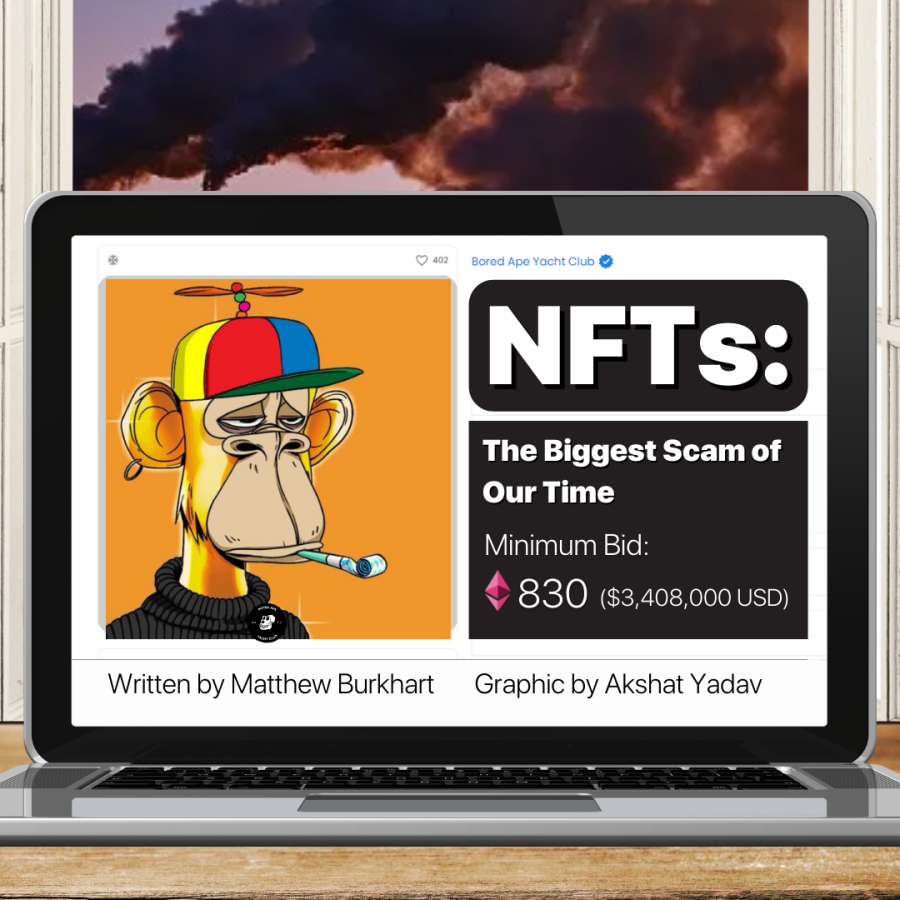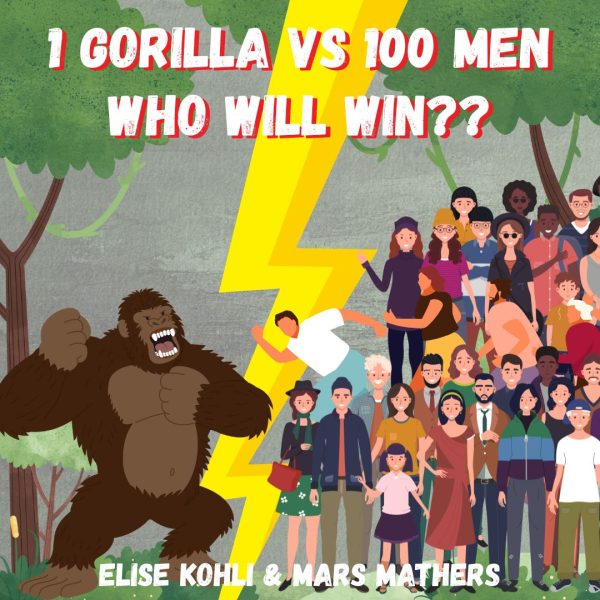NFTs: The Biggest Scam of Our Time
In March, renowned digital artist ‘Beeple’ sold an NFT of a collage of 5,000 works, titled “Everydays: The First 5,000 Days” for 42,329 ether (popular cryptocurrency), worth almost $70 million, to a private buyer. This ether purchase translates into roughly 1,820 tons of carbon dioxide released into the atmosphere. The vast majority of NFTs are simply too unoriginal and distasteful to justify their ridiculous monetary and environmental price.
NFTS, or non-fungible tokens, are digital assets that don’t hold monetary units and can’t be interchanged as currency. NFTs usually take the form of digital artwork, such as images or GIFs. Like physical artwork, NFTs are one-of-a-kind collectibles that hold value based on their originality, which for NFTs, come from strong lines of code that document every cryptocurrency transaction ever made: The Blockchain. NFTs are almost exclusively purchased with cryptocurrency, especially ethereum.
With these prices, both monetary and environmentally, one would assume that NFTs are exceptionally unique in appearance and are true works of art, but surprisingly, that is not the case. The most sought-after NFTs are part of artist collections, the most valuable being the CryptoPunk collection by software developers Matt Hall and John Watkinson of Larva Labs. This series includes 10,000 randomly generated headshots of pixel art characters in 24×24 grids. The most expensive NFT from this series is number 7,523, which showcases a blue figure sporting a facemask and a beanie, and sold for $11.75 million. The fact that there are so many of these NFTs completely contradicts the whole point of collectibles. How unique can ten thousand 24×24 pixel images be from each other? This ridiculous price tag on such an unoriginal and effortlessly created work of “art” is an insult to artists everywhere.

When you purchase an NFT, all you gain are the rights to the original file of the image. Anyone can view and download NFTs, so what is the point of spending millions of dollars just to own a file that anyone else can download for free? Even within the NFT community, there is a term for people who download NFTs without purchasing them: “right-clickers,” which refers to the action of right-clicking on images to download them. They claim that right-clickers are depreciating the value of NFTs by downloading them without buying them, showing that even within the NFT community, they are awa4re of its biggest flaw.
One common misconception surrounding NFTs is found when comparing them to the purchasing of digital photography. Although you are also purchasing a digital image with no physical value, digital photographs aren’t meant to be one of a kind, as the purpose of purchasing digital photography is to enjoy the artistry, not the price tag and originality of the image.
The greatest allure of NFTs is the alleged promise that they are a smart investment, and in time, the buyer will make many times more than what they paid for it. Quantities of people are beginning to empty their savings just to own one of these supposed golden geese, along with celebrities such as Jimmy Fallon, Tony Hawk, and Ellen DeGeneres. Some Twitter users even claimed that they purchased an NFT with their savings without letting their spouse know, with the belief that these “investments” will turn out to be beneficial in the long run.


While this may sound like a novel idea, bringing artists back into the forefront of pop culture, the main problem lies within cryptocurrency and its strain on the environment. The environmental cost of the average ethereum transaction equals 82.46kg of carbon dioxide, which is equivalent to the carbon footprint of 182,760 VISA transactions or 13,743 hours of watching YouTube (digiconomist.net). Not only do cryptocurrency transactions produce heaps of carbon emissions, but the creation and protection of NFTs consume even more arctic-melting carbon. The average NFT has a carbon footprint of over 200 kilograms of carbon, which is equivalent to driving 500 miles in a typical gas-powered car (nytimes.com).
Instead of pouring millions of dollars into digital images that won’t hold any importance in a few years, we should return our attention to actual artists. The difference between NFT creators and artists is that NFTs are meant to be mass-produced, the quality of the art isn’t important as long as there is a low supply and high demand for it. On the other end of the spectrum, artists create art for people to enjoy, even if there is profit involved, they want as many people to enjoy and buy their art as possible, increasing its chances of staying relevant over time. While some NFTs may stand out for their good quality, an NFT simply can’t be art due to its profitable nature and inability to be enjoyed by many people.
Your donation will support the student journalists of Enloe Magnet High School, allowing us to cover our annual website costs. We are extremely grateful for any contribution, big or small!

(He/him)
Matthew is a senior and is very excited to be the news editor this year! He loves writing about political issues and local news. Outside of...







Feehan Tuttell • Dec 10, 2021 at 9:14 AM
slay, Matthew
Owen Lockett • Dec 17, 2021 at 12:50 PM
hey, Feehan